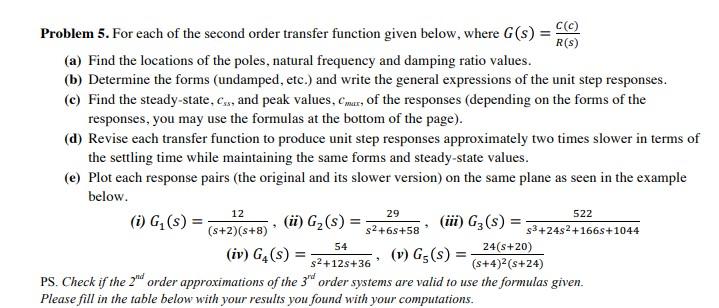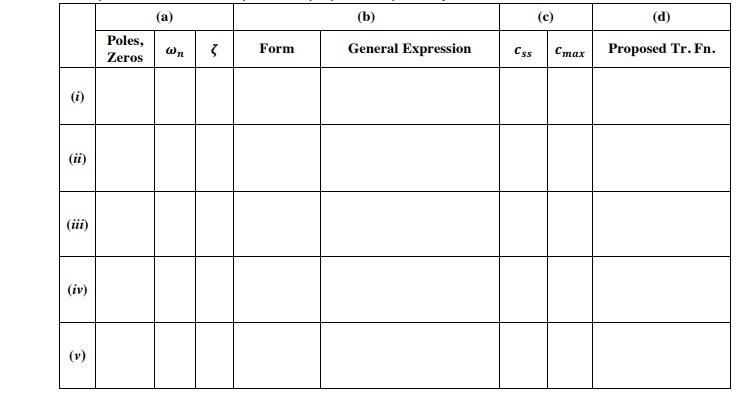Answered step by step
Verified Expert Solution
Question
1 Approved Answer
C(c) Problem 5. For each of the second order transfer function given below, where G(s) = R(s) (a) Find the locations of the poles,


C(c) Problem 5. For each of the second order transfer function given below, where G(s) = R(s) (a) Find the locations of the poles, natural frequeney and damping ratio values. (b) Determine the forms (undamped, etc.) and write the general expressions of the unit step responses. (c) Find the steady-state, c, and peak values, cmar, of the responses (depending on the forms of the responses, you may use the formulas at the bottom of the page). (d) Revise each transfer function to produce unit step responses approximately two times slower in terms of the settling time while maintaining the same forms and steady-state values. (e) Plot each response pairs (the original and its slower version) on the same plane as seen in the example below. 12 29 522 (i) G, (s) = (ii) G2(s) = (iii) G3 (s) = (s+2)(s+8)* s2+65+58 * s3+24s2+166s+1044 54 24(s+20) (iv) G4(s) (v) G3(s) s2+12s+36 (s+4) (s+24) PS. Check if the 2 order approximations of the 3" order systems are valid to use the formulas given. Please fill in the table below with your results you found with your computations. (a) (b) (c) (d) Poles, Form General Expression Cs Cmax Proposed Tr. Fn. Zeros (i) (ii) (iii) (iv) (v)
Step by Step Solution
★★★★★
3.38 Rating (173 Votes )
There are 3 Steps involved in it
Step: 1

Get Instant Access to Expert-Tailored Solutions
See step-by-step solutions with expert insights and AI powered tools for academic success
Step: 2

Step: 3

Ace Your Homework with AI
Get the answers you need in no time with our AI-driven, step-by-step assistance
Get Started


